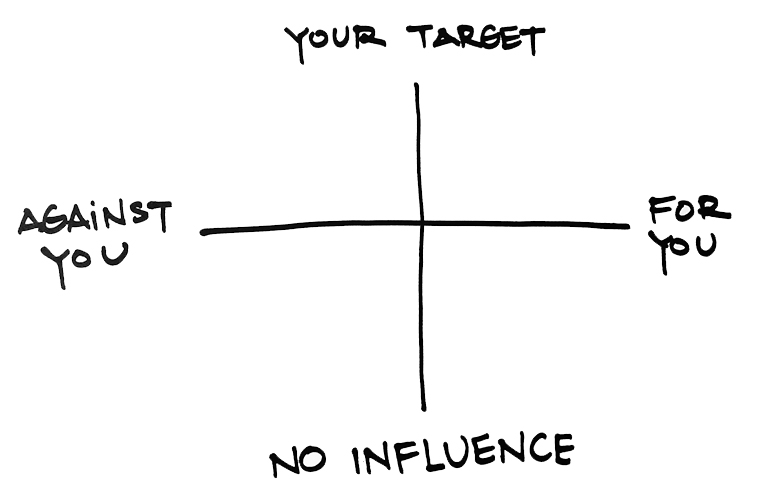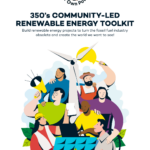Here’s an example of a power-mapping activity you can use with your leadership team:

Step 1: Choose your target. It’s best to choose a person, rather than an institution, because it is easier to understand what, specifically, might influence them.
Step 2: Map the influences on your target. Have your team begin placing people and institutions in your community on the map. You’ll see that there are two axes on the map – one indicates how influential that person is to your target, and the other shows whether that person is for or against your position (or neutral).
Be sure to think really broadly about who is connected to your target – think work, political, family, religious, and neighborhood ties. For elected officials, be sure to look at their major donors and key constituencies.
Step 3: Take a step back. Discuss with your team. What do you notice? Where do you see opportunities to get to your target? Highlight the people or institutions on the map with whom you have good relationships in one colour. Highlight in another colour the people or institutions you believe you could influence.
Step 4: Make a plan. What opportunities exist to influence your target? Discuss how your strategy could take advantage of those opportunities.
(For another way of thinking about your target and outside influence, see: People Power and Understanding the Upside Down Triangle.)



